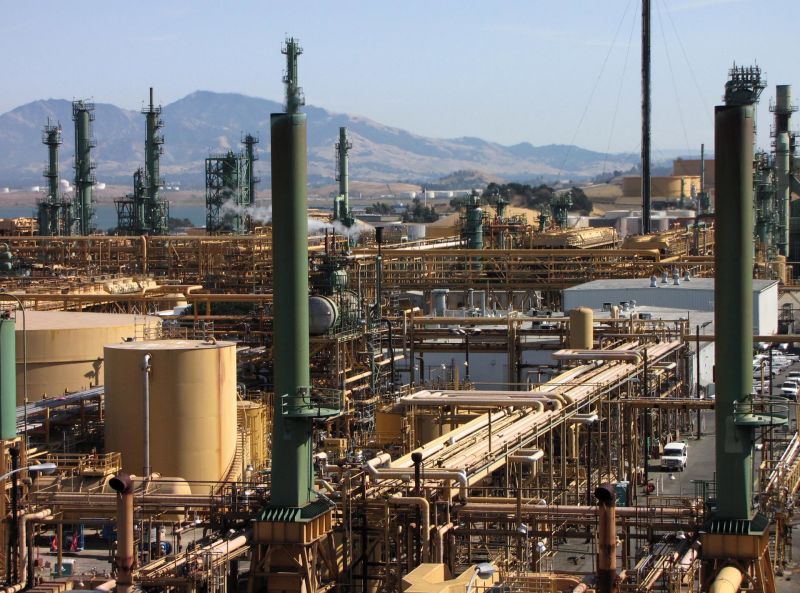Sawyer said that one of the water pumps that cools gases as they travel through part of the refinery malfunctioned. Initially, it was thought that one of the plant's entire units had shut down.
The county determined that the incident did not have an "adverse acute impact on the health and safety of the community," said Sawyer.
The flaring lasted for more than three hours, according to Ralph Borrmann, a spokesman at the Bay Area Air Quality Management District.
Paul Adler, a Phillips spokesman, confirmed that refinery operations were back to normal but offered no other details.
Last Friday afternoon there was a problem at the Valero refinery in Benicia, prompting the facility to send out flares for at least the next 63 hours.
The "unscheduled flaring" released more than 500 pounds of sulfur dioxide into the air, according to a report the company filed with the Governor's Office of Emergency Services.
The company will not answer any questions about the incident.
"It is Valero's policy to not comment on operations or possible outages beyond what is already publicly reported," said Lillian Riojas, a company representative.
Flaring is a practice that allows the refinery to relieve stress from inside the facility.
In the recent Valero incident, it's unclear how long it lasted.
Josh Chadwick, division chief at the Benicia Fire Department, says the flames stopped shooting out from the refinery at 7 a.m. on Monday.
But Borrmann, the air district spokesman, says flares continued intermittently until just before midnight on Wednesday.
That afternoon, Solano County's Department of Human Resources learned that the operation ended, said Matthew Geisert, a hazardous materials specialist with the agency.
Geisert says his department has no other details about the incident.
That lack of information frustrates local activists who have called for tighter emissions regulations for the region's refineries.
"What we don't know is killing us," said Andres Soto with Communities for a Better Environment. "It's a deliberate policy strategy to keep the media and the public ignorant of what is going on with these dangerous chemical processes at the refinery."
A malfunction at a processing unit at Chevron's Richmond refinery led to flaring for several hours on June 19.
Contra Costa County health officials say the county's dispatch center got lots of calls from concerned residents, but they didn't feel the incident was severe enough to issue any serious warnings about it.
Contra Costa , unlike neighboring Solano County, does require more information from a refinery after certain flaring operations.
Chevron filed a 72-hour report with the county's hazardous materials program that revealed the incident was prompted by a compressor in a processing unit tripping offline. The chemicals released during that operation did not rise above state standards, the report found.
But the company will not release more information.
"I can't share any more detail than what we've provided in the county report," said Chevron spokeswoman Leah Casey.
On March 29, Chevron's Richmond refinery had a similar issue that caused flaring. In that incident, residents throughout the region complained of a bad odor. The upset sent sulfur dioxide and hydrogen sulfide into the air.
In the hours after the flaring took place, Chevron did not admit its refinery had a malfunction, other than to say that flaring is an important part of keeping the refinery running safely.
That prompted Sawyer to call on the company to do a better job of telling the public about problems at its local refinery.
"Chevron should be open and say they did have a problem and they're looking at it and they're going to investigate it and see what the problem was," Sawyer said then.
The company said it shared with the public what it felt was important information at the time and eventually filed a report that showed one of the refinery's monitoring devices had failed.
The air district is investigating all four incidents.
